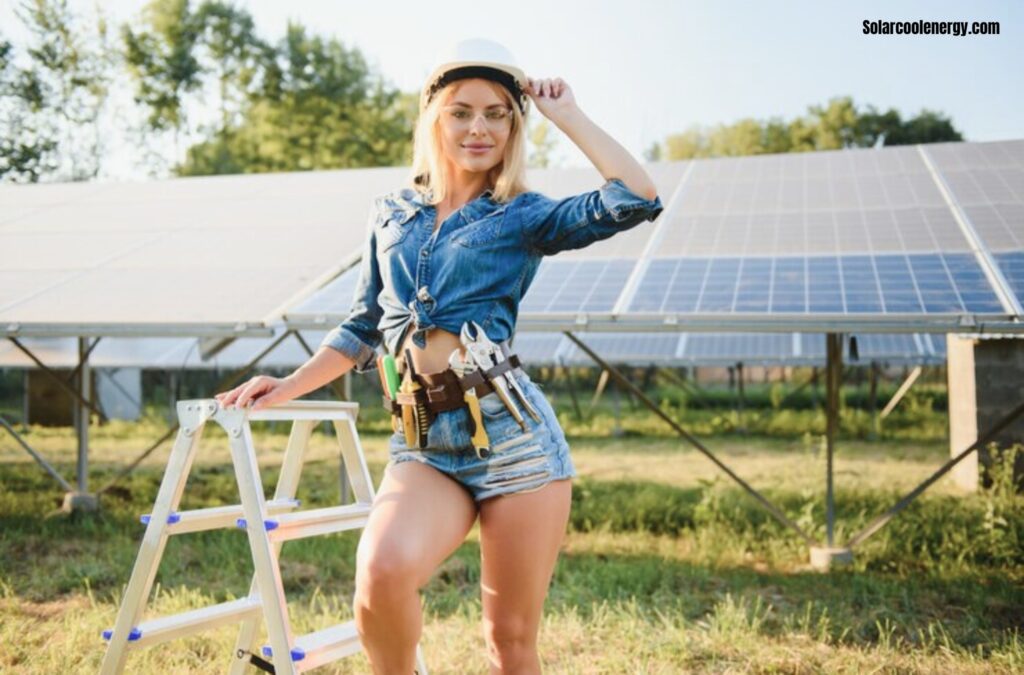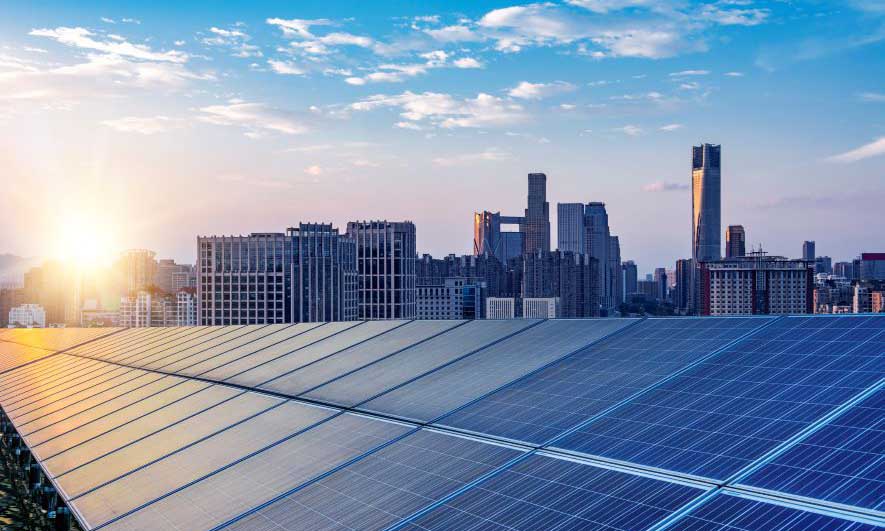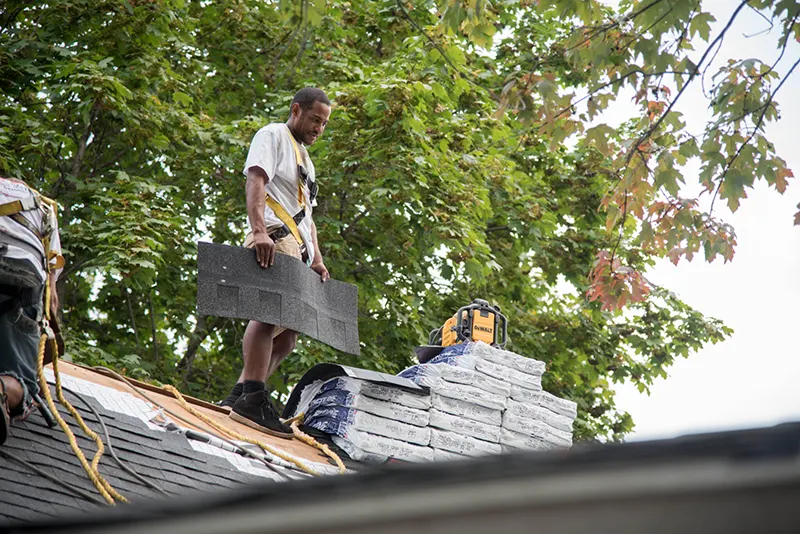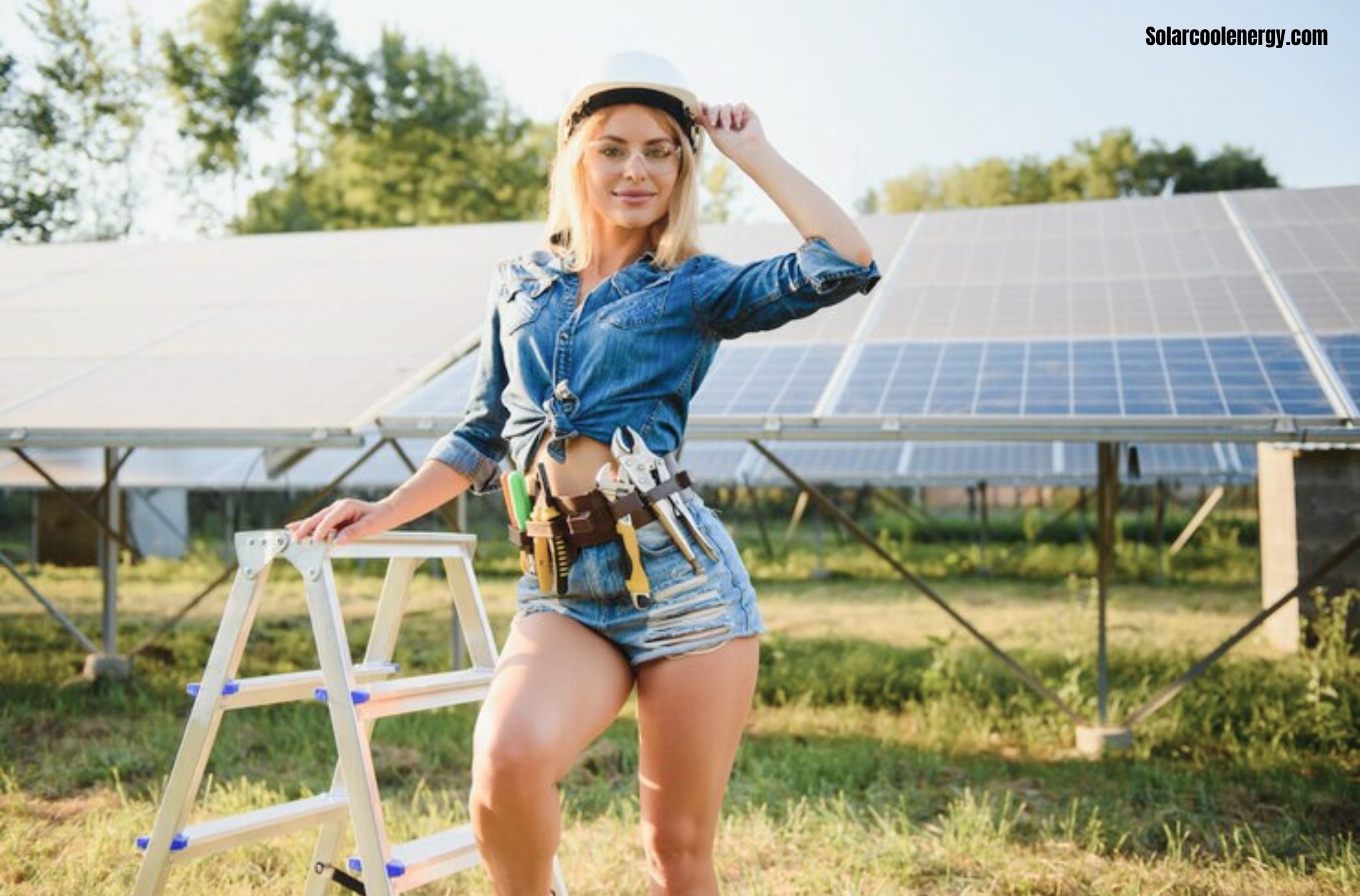Problems with solar panels on roofs can include panel degradation, limited inverter lifespan, the need for roof assessments, potential blocking of water flow, difficult installation, and various roof issues. Other common problems include snail trails on the panels.
However, roof leaks after solar panel installation are extremely rare. Installing solar panels on rooftops as a means of producing renewable energy has gained traction in recent years. However, there are certain drawbacks to using them, as there are with every technological advancement. From panel degradation to roofing issues, it’s important to be aware of the potential Problems with solar panels on roofs that can arise.
We will explore some of the common problems associated with solar panels on roofs and offer solutions and preventive measures. By understanding these challenges, you can ensure that your solar panel system operates efficiently and effectively for years to come. So, let’s dive in and learn about the Problems with solar panels on roofs that can occur and how to address them.

Solar Panel Degradation
Solar Panels Are Prone To Degradation Over Time
Solar panels are a reliable and sustainable solution for harnessing clean energy from the sun. However, over time, these panels can undergo degradation, which can impact their efficiency and performance. It is important to understand the factors that contribute to this degradation and the potential consequences.
Decrease In Efficiency And Performance
One of the main issues with solar panel degradation is the decrease in efficiency and performance. As panels degrade, they become less capable of converting sunlight into usable electricity. This means that you may not be getting the maximum power output from your solar panels, ultimately reducing the energy savings you had initially hoped for.
Factors Affecting Degradation: Temperature, Humidity, Uv Exposure
Several factors contribute to the degradation of solar panels. The first factor is temperature. High temperatures can cause the materials used in the panels to expand and contract, leading to cracks or delamination. Similarly, humidity can also damage the internal components of the panel, causing corrosion or electrical failures.
UV exposure is another significant factor. Solar panels are constantly exposed to sunlight, which contains UV radiation. Over time, this exposure can degrade the materials used in the panels, reducing their effectiveness. It is essential to ensure that the panels are constructed with materials that can withstand prolonged UV exposure.
Solar panel degradation is a common problem that can affect the performance and efficiency of your solar energy system. Factors such as temperature, humidity, and UV exposure play a significant role in this degradation. It is crucial to invest in high-quality panels that are built to withstand these factors and regularly maintain and inspect your system to mitigate degradation issues. By doing so, you can ensure that your solar panels continue to function optimally and provide you with clean and sustainable energy for years to come.
Inverter Lifespan
Inverters Have A Limited Lifespan
In the world of solar panels, inverters play a crucial role in converting the direct current (DC) electricity generated by the panels into usable alternating current (AC) electricity. However, it’s important to note that inverters have a limited lifespan. Typically, the lifespan of an inverter is around 10 to 15 years, depending on various factors such as the quality of the brand, maintenance practices, and environmental conditions.
Need For Regular Maintenance And Replacement
To ensure the smooth functioning of a solar panel system, regular maintenance of inverters is essential. Dust, debris, and even faulty electrical connections can affect the performance of the inverter over time. Therefore, it is recommended to have the inverters inspected and serviced by a professional on a regular basis. This can help identify any potential issues and ensure that the inverter operates optimally for its entire lifespan. Additionally, if an inverter is nearing the end of its lifespan or becomes faulty, it should be replaced promptly in order to avoid any disruptions in the overall system performance.
Impact On Overall System Performance
The lifespan of an inverter and its maintenance can have a significant impact on the overall performance of a solar panel system. If an inverter is not functioning properly, it can result in decreased energy production and efficiency. This means that the system may not be able to generate the expected amount of electricity, leading to potential financial losses for the homeowner or business owner. Regular maintenance and timely replacement of inverters are critical aspects in ensuring that the solar panel system performs at its best and delivers the desired energy output.
Overall, understanding the lifespan of inverters, the need for regular maintenance and replacement, and their impact on the overall system performance is crucial for anyone considering installing solar panels on their roofs. By prioritizing these factors, individuals can maximize the benefits of solar energy and enjoy a reliable and efficient renewable energy solution for years to come.
Roof Assessments
Importance Of Conducting Roof Assessments Before Installing Solar Panels
Before installing solar panels on a roof, it is crucial to conduct a thorough roof assessment. This assessment ensures that the roof is suitable for supporting the weight of solar panels and that there are no underlying issues such as leaks or structural weaknesses that could affect the installation process.
Ensuring Roof Integrity And Structural Capability
One of the key factors to consider during a roof assessment is ensuring the integrity and structural capability of the roof. Solar panels can be heavy, and installing them on a roof that is not structurally sound can lead to serious Problems with solar panels on roofs down the line. The assessment will identify any areas of concern and determine if repairs or reinforcements are necessary before proceeding with the solar panel installation.
Cost Implications Of Roof Repairs Or Replacements
If a roof assessment uncovers issues that need to be addressed before installing solar panels, there may be cost implications. Roof repairs or replacements can add significant expenses to the overall project. However, it is important to address these issues beforehand to ensure the longevity and effectiveness of the solar panel system. Ignoring Problems with solar panels on roofs can lead to more severe damage and expensive repairs in the future.

Credit: www.thehartford.com
Water Flow Interruption
Potential For Water To Get Blocked Or Redirected By Solar Panel Installations On Roofs
One of the Problems with solar panels on roofs with installing solar panels on roofs is the potential interruption to water flow. When solar panels are installed on a roof, they create an obstacle that can block or redirect the natural flow of water. This can lead to several issues that can cause damage to the roof structure and other components of the building.
Impact On Drainage Systems And Gutters
The presence of solar panels on a roof can have a significant impact on the functionality of drainage systems and gutters. When water is obstructed by solar panels, it can accumulate in certain areas and overwhelm the drainage system, causing water to pool or overflow. This can lead to water damage, erosion, and even foundation issues if the excess water is not properly redirected.
Risk Of Water Leakage And Damage To The Roof Structure
Another concern with the interruption of water flow by solar panels is the increased risk of water leakage and damage to the roof structure. When water is blocked or redirected by solar panel installations, it can find its way into gaps, cracks, or damaged areas of the roof, leading to leaks and potential structural damage. Over time, this can weaken the roof and compromise its overall integrity.
In conclusion, while solar panels offer numerous benefits, it is important to consider the potential Problems with solar panels on roofs they can cause, such as water flow interruption. Proper installation techniques and regular maintenance are crucial in order to mitigate these risks and ensure the longevity and functionality of both the solar panels and the roof.
Installation Challenges
Complex Installation Process For Solar Panels On Roofs
Installing solar panels on roofs can be a complex process that requires careful planning and expertise. From the initial assessment of the roof’s suitability to the final installation, there are several steps involved that can pose challenges.
Need For Experienced And Skilled Professionals
Due to the intricacies of solar panel installation, it is crucial to rely on experienced and skilled professionals. These experts have the knowledge and training to handle the various aspects of the installation process accurately and efficiently.
Potential For Errors And Subpar Installations If Not Properly Done
Without the proper execution of the installation process, there is a significant risk of errors and subpar installations. This can result in reduced energy production, decreased efficiency, and potentially costly repairs in the future.
It is important to note that solar panel installation requires compliance with local building codes and regulations, as well as adherence to specific manufacturer guidelines. Failure to follow these requirements can lead to poor installations that may not meet safety and performance standards.
Furthermore, improper installation can result in issues such as roof leaks, damage to the structure, and compromised functionality of the solar panels. These Problems with solar panels on roofs can be avoided by ensuring that the installation is done correctly by qualified professionals.

Credit: roofingaboveall.com
Other Roof Issues
Existing Roof Issues Can Complicate Solar Panel Installations
When considering installing solar panels on your roof, it’s important to assess any existing issues with your roof. These issues can complicate the installation process and may require additional costs and repairs. Let’s take a closer look at some of the common roof problems that can arise when installing solar panels.
Aging Roofs, Leaks, Or Structural Concerns
An aging roof can present challenges when installing solar panels. As roofs age, they become more susceptible to leaks and structural concerns. It’s important to ensure that your roof is in good condition and can handle the added weight of solar panels.
Leaking roofs can be a major concern when considering solar panel installations. The installation process requires drilling holes into your roof for mounting the panels, and any existing leaks can compromise the integrity of your roof and lead to further damage.
In addition, structural concerns such as weak or damaged roof trusses can affect the stability of the solar panel system. It’s crucial to have a thorough assessment of your roof’s structural integrity before proceeding with the installation to ensure safety and prevent any potential accidents.
Additional Costs And Potential Need For Roof Repairs Or Replacements
Installing solar panels on a roof with existing issues can potentially incur additional costs. Depending on the severity of the Problems with solar panels on roofs, you may need to invest in roof repairs or even a complete roof replacement before the solar panels can be installed.
Roof repairs can include fixing leaks, replacing damaged shingles or tiles, reinforcing weak areas, or addressing any structural issues. These repairs are essential to ensure that your roof can effectively support the weight of the solar panels and maintain its integrity over time.
It’s crucial to factor in these additional costs when budgeting for your solar panel installation. While solar energy can provide long-term savings on your energy bills, it’s important to consider the upfront expenses required to ensure a safe and effective installation.
In conclusion, existing roof issues can complicate the process of installing solar panels. Aging roofs, leaks, and structural concerns must be addressed before proceeding with the installation. Additional costs for roof repairs or replacements may be necessary to ensure the safety and stability of the solar panel system.
Snail Trails
Snail trails are a common cosmetic issue that can occur on solar panels installed on roofs. These trails are visible marks that can detract from the overall appearance of the panels. While they do not affect the functionality or performance of the panels, they can be a concern for homeowners who value the aesthetic appeal of their solar installations.
Caused By Moisture And Dirt Accumulation
The main cause of snail trails on solar panels is the accumulation of moisture and dirt. Over time, rainwater, dew, and airborne pollutants can settle on the surface of the panels. As the moisture evaporates, it can leave behind mineral deposits and dirt particles, forming the characteristic trail-like patterns.
The severity of snail trails can vary depending on the local climate and environmental conditions. Areas with high humidity, frequent rainfall, or significant air pollution may be more prone to snail trail formation. Additionally, the angle and orientation of the solar panels can also affect the accumulation of moisture and dirt.
Cleaning And Maintenance Considerations For Snail Trails
To maintain the visual appeal of solar panels and minimize the appearance of snail trails, regular cleaning and maintenance are important.Problems with solar panels on roofs Here are some considerations:
- Cleaning frequency: It is recommended to clean solar panels at least once or twice a year to remove any accumulated dirt or mineral deposits. However, the cleaning frequency may vary depending on the local conditions and the severity of the snail trails.
- Cleaning methods: When cleaning solar panels, it is crucial to use non-abrasive materials and mild detergents to avoid damaging the panel surface. Soft brushes, sponges, or lint-free cloths can be used to gently scrub away dirt and deposits. Rinse thoroughly with clean water to ensure residue-free cleaning.
- Professional cleaning: For homeowners who prefer to leave the cleaning to the experts, professional solar panel cleaning services are available. These services have the necessary equipment and expertise to safely and effectively clean solar panels without causing any damage.
By maintaining the cleanliness of solar panels, homeowners can not only improve the visual appeal of their solar installations but also ensure optimal energy production. Regular cleaning and maintenance help to maximize the efficiency and longevity of the panels, allowing them to continue harnessing clean energy from the sun.

Credit: www.thomasnet.com
Frequently Asked Questions On Problems with solar panels on roofs
What Is The Downside Of Solar Panels On Roof?
The downside of solar panels on the roof is that they require a significant amount of space for installation, potentially needing hundreds or even thousands of acres depending on the location. Roof leaks after installation are extremely rare. Hot spots and electrical malfunctions can also occur, increasing the risk of fire.
Proper installation and maintenance are crucial to prevent these issues.
How Common Are Roof Leaks With Solar Panels?
Roof leaks after installing solar panels are extremely rare and not common at all.
What Is The Main Problem Of Solar Panels?
The main problem with solar panels is that they can experience degradation over time, leading to a decrease in energy production. Other issues include the limited lifespan of inverters, difficulties with installation, roof assessments, and potential water flow interruption. Additionally, roof issues and other installation Problems with solar panels on Problems with Problems with solar panels on roofs may arise.
Hot spots can also occur, leading to an overload and excess heat generation. Finally, there is a risk of electrical fires if the installation is not done properly.
What Are The Risks Of Rooftop Solar?
Risks of rooftop solar include installation malfunctions, lack of ground fault protection, overheating components, and increased fire risk. Improper installation, faulty wiring, and insufficient insulation can cause electrical arcing and fires.
Conclusion
While solar panels on roofs are a great source of renewable energy, there are several problems that can arise. These include degradation of panels, shorter lifespan of inverters, roof assessments, water flow blockage, difficult installations, and potential damage to the roof itself.
Despite these challenges, it is important to address and overcome these issues in order to maximize the benefits of solar power and contribute to a sustainable future.

